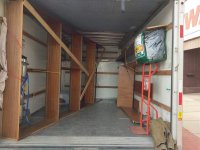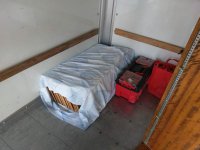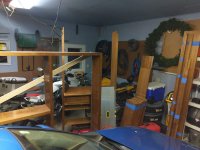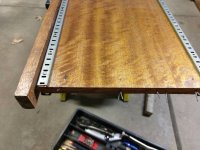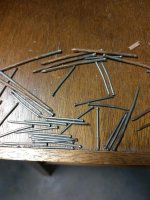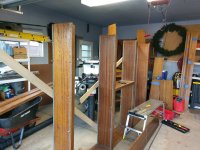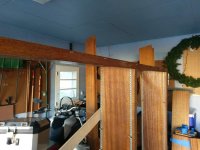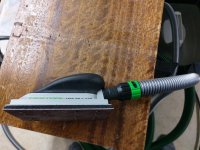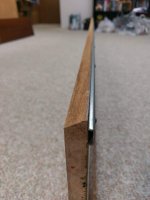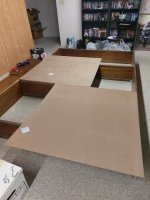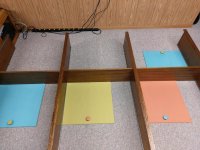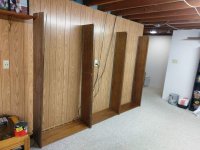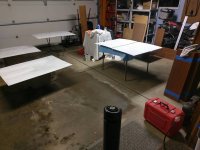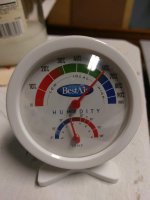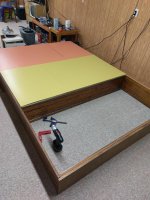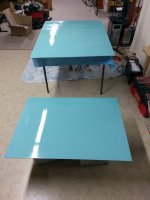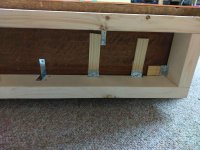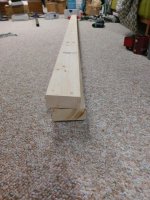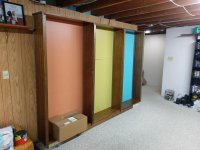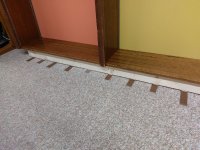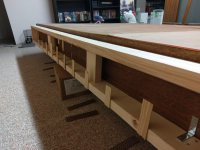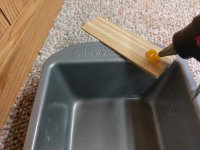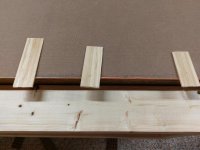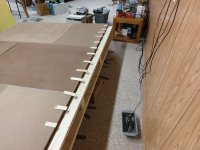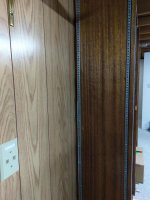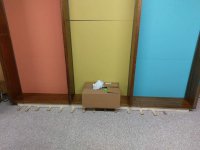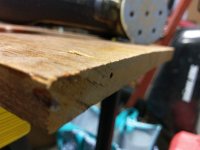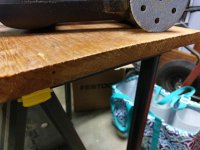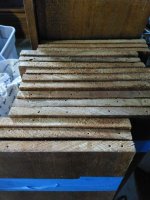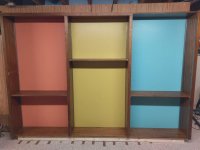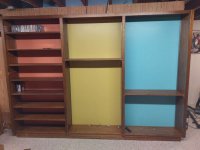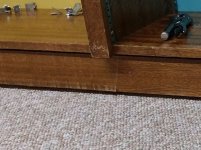squall_line
Member
I figured if I was going to have quad-digit posts on here, maybe it should be more than kvetching, kibbitzing, and posting Recon notices. So now that I'm on post #1000, it's time for a project post. But I don't have time to start a new project (I have some Sys Ports to build next), so here's one whose memory popped up in my photos feed last week.
Reclaimed Bookshelf Conversion
Material: 3/4" mahogany?, reclaimed from a law office; pine 2x4 base
Assembly method: screws, corner brackets for base, nailed backer board for rigidity, hot melt wood glue for shims
Festools used: HKC 55 with FSK 420 rail, CXS, RO 90, CT MINI, HSK 80x133 Hand Sanding Block
Other tools used: Craftsman C3 drill, Milwaukee 7 1/4" circular saw, Swanson straight edge, Irwin Quick Clamps
Finishes used: Minwax Oil-modified water-based polyurethane, Zinsser Cover Stain Oil-based Primer, Easy Care Ultra Eggshell interior latex paint (True Value house brand)
The donor
Even though this project was completed at the end of March, 2021, it all started a little over a year ago when I saw a listing on Facebook Marketplace for solid wood built-ins that were being removed from a law office remodel. I needed shelving for the basement of our new house for all of my CDs, and this felt like it would be a "cheap" and fun way to do it (note: it had its fun moments, but it was not cheap). I took a trip to go see the shelving in person and found the entire office was in the middle of demolition. The wood appeared (and still appears) to be mahogany, and during demo I found "Japan" stamped on the ends of some of the boards. They had likely been there since the mid-60s when the office was originally built.
Considering they held a law library for over 50 years, they were remarkably free from major bowing.
[attachimg=1]
The seller said that he had someone else interested, but the other person "only really needed the left half". Good news, I only really had enough projects in mind for the wood from the right half! So a few days later, my wife and I rented a U-Haul (which is its own long, annoying story) and headed out with tools in hand to start to demo the shelves and load them up. I really wish I had taken pictures of the demo, but it wasn't terribly exciting: mostly pry bars, hammers, and linesman pliers to pull the myriad nails out of everything. The best parts of the demo: it was my first major preservation-minded demo, and it was the first major project my wife and I worked on together without getting in each other's way or on each other's nerves.
The main shelves were all stationary and nailed in place, but there also happened to be a set of adjustable shelves left behind that had seen some better days. All of the shelves had already been claimed, but the pilaster strips and clips were all present and accounted for, so we left it in one piece and moved it into the truck by itself.
[attachimg=2]
[attachimg=3]
It took up quite a bit more space in the already full garage than I had anticipated.
[attachimg=4]
Reclaimed Bookshelf Conversion
Material: 3/4" mahogany?, reclaimed from a law office; pine 2x4 base
Assembly method: screws, corner brackets for base, nailed backer board for rigidity, hot melt wood glue for shims
Festools used: HKC 55 with FSK 420 rail, CXS, RO 90, CT MINI, HSK 80x133 Hand Sanding Block
Other tools used: Craftsman C3 drill, Milwaukee 7 1/4" circular saw, Swanson straight edge, Irwin Quick Clamps
Finishes used: Minwax Oil-modified water-based polyurethane, Zinsser Cover Stain Oil-based Primer, Easy Care Ultra Eggshell interior latex paint (True Value house brand)
The donor
Even though this project was completed at the end of March, 2021, it all started a little over a year ago when I saw a listing on Facebook Marketplace for solid wood built-ins that were being removed from a law office remodel. I needed shelving for the basement of our new house for all of my CDs, and this felt like it would be a "cheap" and fun way to do it (note: it had its fun moments, but it was not cheap). I took a trip to go see the shelving in person and found the entire office was in the middle of demolition. The wood appeared (and still appears) to be mahogany, and during demo I found "Japan" stamped on the ends of some of the boards. They had likely been there since the mid-60s when the office was originally built.
Considering they held a law library for over 50 years, they were remarkably free from major bowing.
[attachimg=1]
The seller said that he had someone else interested, but the other person "only really needed the left half". Good news, I only really had enough projects in mind for the wood from the right half! So a few days later, my wife and I rented a U-Haul (which is its own long, annoying story) and headed out with tools in hand to start to demo the shelves and load them up. I really wish I had taken pictures of the demo, but it wasn't terribly exciting: mostly pry bars, hammers, and linesman pliers to pull the myriad nails out of everything. The best parts of the demo: it was my first major preservation-minded demo, and it was the first major project my wife and I worked on together without getting in each other's way or on each other's nerves.
The main shelves were all stationary and nailed in place, but there also happened to be a set of adjustable shelves left behind that had seen some better days. All of the shelves had already been claimed, but the pilaster strips and clips were all present and accounted for, so we left it in one piece and moved it into the truck by itself.
[attachimg=2]
[attachimg=3]
It took up quite a bit more space in the already full garage than I had anticipated.
[attachimg=4]


